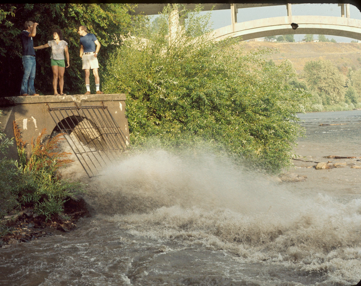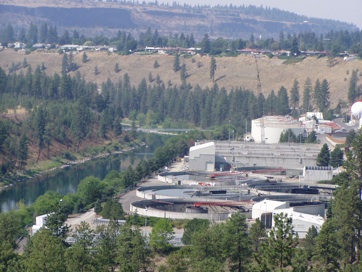Combined sewage overflow “CSO” in the City of Spokane, dumping sewage (and PCBs) into the Spokane River. The City’s stormwater is the largest contributor of PCBs. [WA Dep’t of Ecology photo]



&
Spokane River PCBs
The City of Spokane has been identified as a major contributor of PCBs to the Spokane River. According to sampling reports, the City’s stormwater is the largest contributor of PCBs by huge margins. The PCBs come from two sources: the city’s wastewater treatment plant, and its uncontrolled stormwater overflow points along the Spokane River.
Despite its contribution to the problem, the City of Spokane has never issued a health warning to the public or otherwise reported on or addressed its PCB pollution to the Spokane River.
The City’s contribution to PCB pollution is substantial. The sampling data indicate that the City’s PCB concentrations in stormwater are approximately 42,700 picograms (trillionths) per liter during stormwater events. This number exceeds downstream standards by 18,000 times.
PCB discharges from the Spokane wastewater treatment plant are lower, registering at 1,364 picograms per liter – but still exceed downstream standards by 400.


Sewage Treatment Plant adding PCBs to the Spokane River